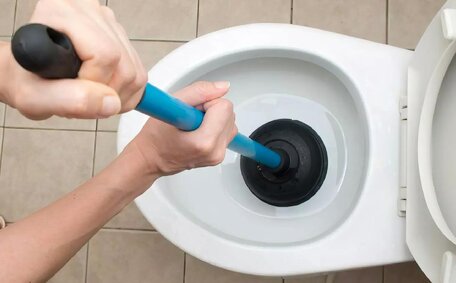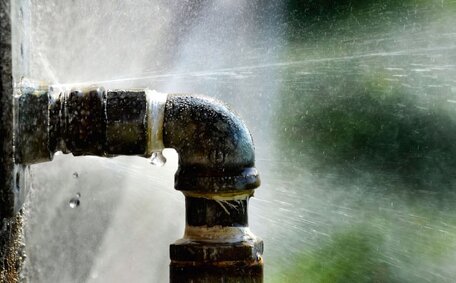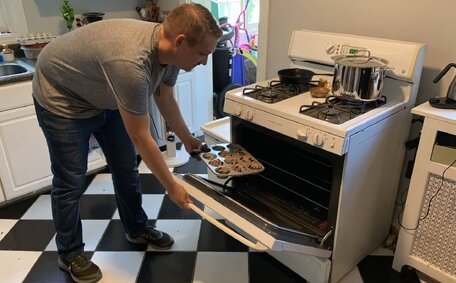Locating the Main Water Shutoff Valve in Your Home
Understanding how to use the main shutoff valve is essential for stopping water flow into your home swiftly during emergencies or extended absences.
Common locations for finding the main shut off valve include:
- Near the front boundary of your property, a typical thoroughfare for the main water line
- Outside near your meter box, often protected by a cover plate, where your water meter resides
- Inside your home, commonly under the kitchen sink or near the water heater
- In the garage walls or flooring where vehicles are parked
- Underground water pipe access points
The valve is usually a clearly marked red or yellow lever-style ball valve or wheel valve, designed to cut off water supply. Once spotted, you can engage in turning your water off by aligning the valve perfectly perpendicular to the pipe.
In apartments and multi-dwelling units, additional isolation valves may be installed for the internal water supply.
Mastering the quick shutdown of your water via the main shutoff valve is vital to averting damage from leaks or burst pipes. Periodic closure of the valve is also important for pipe pressure management, reducing the likelihood of future leaks.
Identifying Different Types of Water Shutoff Valves
Two principal varieties of valves can control water entry into your home: gate valves and ball valves:
- Gate valves feature a wheel that must be turned clockwise to stop water flow. They close gradually, which can save your pipes from damage due to water hammer if operated too briskly.
- Ball valves have a red or yellow lever that turns 90 degrees perpendicular to the pipe to stop water flow. They provide instant shutoff, but the lever can break if forced.
If unsure of how to operate the shutoff valve, handle it gently to avoid damage. A stiff valve may signal corrosion, necessitating a plumber’s assessment for potential water supply shutdown and valve replacement. For stuck valves that you cannot budge, contact Brighton-Le-Sands Plumbing for professional assistance.
Knowing your home’s valve type and operation method enables a swift response in emergencies to avert damage. Annual shutoff provides an opportunity to check valves and prevent water from entering your abode unexpectedly.
Step-by-Step Process for Turning Off the Water
- Find your main valve. Review the detailed portion on valve positions if you’re uncertain and want to know how turn off the supply.
- Identify whether you have a gate valve or ball valve. Ball valves use a perpendicular red/yellow lever, while gate valves require a clockwise wheel turn.
- Notify household members before turning off the water to avoid inconvenience and wastage.
- Position a bucket under the valve to collect any water that may drip out upon shutoff.
- Gently execute a valve turn by twisting the ball valve lever to a 90 degree angle, or spin the gate valve wheel clockwise until it tightens.
- Open the highest and lowest water outlets’ hot and cold taps to release the system’s pressure.
- Once water ceases, turn off taps and verify your main water supply valve is fully closed by trying to turn on one tap – no trickles should emerge, confirming you’ve successfully turned off your water.
By following these simple steps, you can safely shut off the main water supply, avoiding unplanned incidents and spills. Turning off auxiliary supplies to appliances first, such as washing machines or dishwashers, reduces wastage and potential overflows if in operation during main line closure.
If you face trouble, detect leaks, or need a valve replacement, ensure that water supplier protocols are followed before continuing.
Releasing Water Pressure Before Working on Plumbing
After shutting down the main water supply valve, there may still be residual pressure in the pipes. Before commencing any installation or repair work, it is pragmatic to engage the stop valves to release pressure, helping you avoid the surprise of water when opening fixtures or pipes.
The following steps will release the water pressure:
- Turn on the highest tap in your home (usually an upstairs shower)
- Turn on the lowest tap in your home (usually a downstairs laundry room tap)
- Allow taps to run until the flow of water stops completely
- Turn off taps
Once water stops flowing at the highest and lowest points, the system’s pressure is neutralised. You may now safely work on installations, replacements or repairs with no risk of pressurised water leaks.
Regularly using the valve to shut off your mains water ensures reliable function in emergencies. Turn the valve off and on periodically for maintenance to keep it operational and free from mineral deposits.
When You Should Turn the Water Supply Back On
After finishing plumbing repairs or maintenance, methodically check for leaks before restoring water flow. Turning the main supply back on too soon can worsen damages if undiscovered leaks persist.
Upon completing your work, adhere to the subsequent process:
- Inspect all repaired fixtures and pipes visually for any signs of dripping or moisture
- Check under sinks, near toilets or under appliances for small leaks
- Scan ceilings and walls below for stains indicating higher leaks
- Tighten joints or apply more caulk to seals if you observe minor drips
- Position buckets beneath potential leak sites before restoring the water flow
- Ensure there are no leaks before closing all sink taps and showers
- Stay close to the main water valve and carefully open it by turning the handle
- Inspect the valve area for any new drips or spurting
- If there are no leaks, methodically examine each sink, toilet, and tap
- Contact Brighton-Le-Sands Plumbing immediately if new leaks become evident
Do not restore water system pressure without thoroughly inspecting all repair points. A small oversight can quickly escalate into a disastrous pipe burst event flooding your home.
We recommend arranging a follow-up assessment to discover more about managing the process, or you can call your plumber for an immediate inspection, even for seemingly successful repairs. Some leaks manifest over time as seals settle or parts shift. Our licenced technicians can provide monitoring and secondary reinforcements as required.
Seasonal Maintenance to Prevent Frozen Pipes
As winter nears, take preventative measures to shield your plumbing from freezing temperatures. Frozen pipes, if not properly insulated, can cause cracks and extensive damage to your gas hot water system, making proper winterization crucial.
Here are some tips from the team at Brighton-Le-Sands Plumbing to safeguard your pipes:
- Insulate all exposed water pipes, especially in unheated areas like garages or basements.
- Seal any leaks or gaps letting cold air inside near pipes. Cold drafts can quickly freeze pipes.
- Disconnect garden hoses. The water left inside can freeze and expand to damage pipes.
- Leave cabinet doors open under kitchen sink to allow warmer room air to circulate near pipes.
- Consider installing heat tape or heating cables to higher risk pipes.
- Drain any irrigation systems and cut off valve water supplies.
An annual tankless water system inspection from our licenced technicians checks pipe integrity and insulation, identifies risks, and reinforces vulnerable areas prone to freezing.
Taking a proactive approach ensures your plumbing is winter-ready and protected from burst events. Contact Brighton-Le-Sands Plumbing to schedule your seasonal maintenance checks.
Responding Confidently to Plumbing Emergencies
Plumbing emergencies like burst pipes or major leaks can quickly escalate into disastrous flooding events with devastating water damage if not correctly handled. Promptly locating and shutting off your main water valve is key to reducing damage and repair costs during a home plumbing emergency.
If faced with gushing water from a broken pipe or fixture, remember to know where to turn the valve and follow these steps:
- Get everyone away from the affected area to prevent slips or electrocution.
- If necessary, switch off power at the mains if water contacts electrical sources.
- Use what you’ve learned to find and operate the main shutoff valve, stopping your home’s water supply.
- Confirm the valve type then gently turn off the main supply.
- Should you require prompt assistance, do not hesitate to call us for our emergency plumbing services at 1300 349 338.
Hesitating during flooding situations markedly amplifies the damage your property sustains as water continues to saturate walls, electrical fixtures and furniture with each passing moment. Understanding and taking the time to learn how to shut off your water can be critical in these moments. Comprehending how to stop flow water on your own diminishes the need for extensive repairs subsequently.
For minor leaks or drips, ensure you have materials to manage water securely while waiting for our licensed technician’s evaluation.
Always contact Brighton-Le-Sands for reliable plumbing support, available at any time for any plumbing emergency. We prioritise prompt water damage control and long-lasting corrective repairs to restore your home’s functionality.






